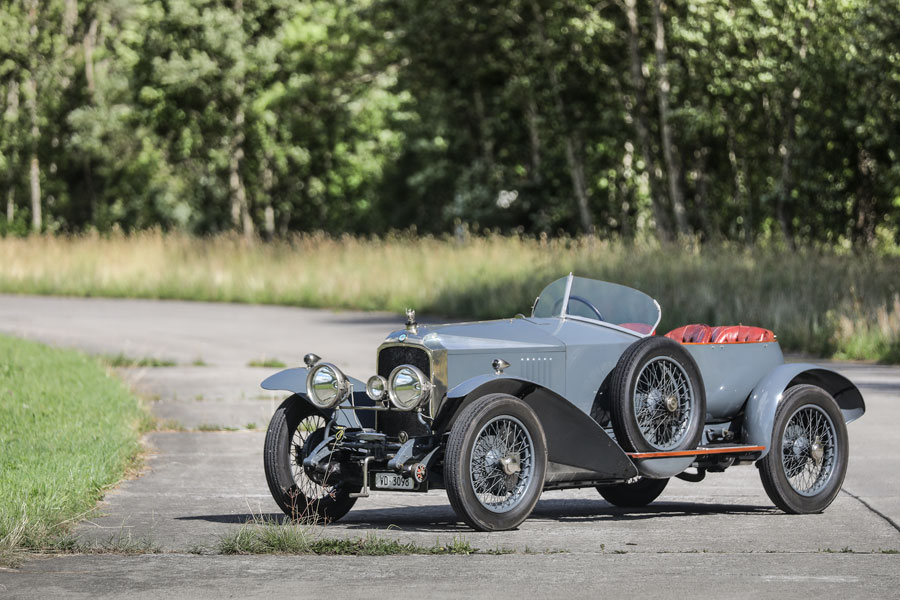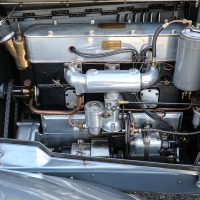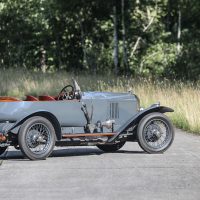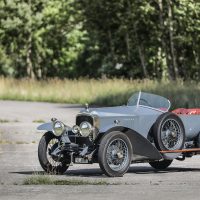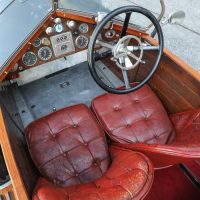SCM Analysis
Detailing
| Vehicle: | 1924 Vauxhall 30-98 OE-Type Wensum Tourer |
| Years Produced: | 1923–27 |
| Number Produced: | 313 (plus 287 E-types) |
| Tune Up Cost: | $200 |
| Chassis Number Location: | Plate on firewall |
| Engine Number Location: | Stamped into timing chest at front of engine |
| Club Info: | Vintage Sports-Car Club |
| Website: | http://www.vscc.co.uk |
| Alternatives: | 1927–31 Bentley 4½ Litre, 1929–30 Invicta NLC/A-type or 1930 S-type, 1933–35 Lagonda M45 |
This car, Lot 12, sold for $1,653,174 (£1,247,000), including buyer’s premium, at Gooding & Company’s “Passion of a Lifetime” sale at the Concours of Elegance at Hampton Court Palace near London on September 5, 2020.
This was one of the 15 cars being sold from the collection of Hubert Fabri, a Swiss-resident Belgian national, the jewels of which were the three Bugattis of impeccable rarity, provenance and originality. Others in the collection followed the same criteria of excellence, as Fabri collected only the best and the exceptional.
The 30-98 follows the winning formula of a big engine in a lightweight car. The story is that the first one was built in 1913 for car dealer and motorsport competitor Joseph Higginson, whose objective was victory in the Shelsley Walsh hillclimb. The Laurence Pomeroy design obliged and set a record that stood for 15 years.
Pomeroy’s 30-98 was powered by a 4.5-liter, 4-cylinder, side-valve engine — in effect a stretched version of his earlier Prince Henry D-Type. With 90-plus horsepower, and a weight of around 2,700 pounds with the factory 4-seater Velox tourer coachwork, it had a formidable power-to-weight ratio for the time. A road-equipped 30-98 was capable of around 85 mph, and when stripped for racing, the company guaranteed a top speed in excess of 100 mph for the later overhead-valve models, a capability demonstrated at Brooklands on numerous occasions.
When post-World War I manufacture resumed in 1919, the model was designated E-Type (its Prince Henry predecessor having been the C, and the 25-hp Tourer, the D). The successor, the overhead-valve OE, arrived in early 1923. Though it was a little smaller at 4,224 cc, the power went up to 110 hp, and it featured a three-inch-wider track and a four-inch-longer wheelbase. Front-wheel brakes appeared in late 1923, operated, along with the transmission brake, by foot pedal via cable. (Earlier cars were largely braked by a hand lever operating the rear drums.) Hydraulics didn’t arrive until 1926. A bit of trivia: Cable-braked cars have a compensating mechanism — known as the “kidney box,” for obscure reasons — mounted ahead of the radiator.
There’s a fierce rivalry between Bentley 4½ Litre owners and Vauxhall 30-98 owners, with each side claiming their cars are superior. For the record, Vauxhalls usually win when put to trial, as they’re a bit lighter. But what’s not in doubt is that the OE overhead-valve cars are seen as more desirable than the side-valve E-series cars. And among those, the ones to have are the rarer cars with the lighter, sportier bodies rather than the 4-seater Velox.
Which is precisely what we have here. Furthermore, this car features the prettier low-radiator design of the earlier OEs. It stayed with its first owner until the late 1950s, then was restored while in the second owner’s hands, repeatedly winning the VSCC Oulton Park Concours, and was later owned by collector Reg Parker.
Only 12 or 13 Wensums were made, depending on who you ask. The name, apparently, comes from the river Wensum in Norfolk, where Vauxhall’s Works manager A.J. Hancock kept a fast motorboat. The sporty boat-tailed body is nominally a 3-seater, with space for a single passenger in the rear, though in reality it’s more suited to a duo. The Wensum cost £150 more than the standard £1,200 tourer.
Chassis OE183 was completed in November 1924, originally fitted with Wensum coachwork, which together with the vee windscreen and strikingly bold instruments, gives a distinctly nautical air. It doesn’t have its original engine, which isn’t seen as a problem with the rival Bentleys and shouldn’t be here. It originally had engine OE178, which was replaced with OE148, and later still, OE220.
The car presented incredibly well, with that 50-year-old restoration holding up. Most of these Vauxhalls, just like the rival Bentleys, no longer have their original bodies, although this one might. (Then again, the catalog did not specifically say so, which usually indicates in the negative.)
The leather appeared nicely patinated, extensive cracking suggesting it might be original. A dash plaque for a 30-98 (then expressed “30/98”) Register meet is dated September 1964, and the flashing indicators are a sensible later addition.
During bidding it was “in the market” from £700k ($928k), which was £100k ($133k) under the lower estimate. Still, this is about twice the price of an average example, if there is such a thing. These cars have tended to be around the same price or a little less than a Bentley 4½ Litre. Four-seater Veloxes are cheaper, and bitsa status appears to affect the value of Vauxhalls more than Bentleys, a conundrum similar to that eternal question, “Why is a Maserati half the price of an Aston Martin when on paper they are so similar?”
However, on this day, in front of a select group of 48 invited bidders cordoned off from the hoi polloi by a neat white picket fence, bidding kept going… and going, to hammer for £1.1m, a new world record. Extra duties would be paid on top if it remained in the U.K., owing to its Swiss registration, but rumor is that it’s headed to the U.S.
The explanation for the big number here is simple, as the high price for this exceptional car boils down to that old mantra: Find another like it. ♦
(Introductory description courtesy of Gooding & Company.)
